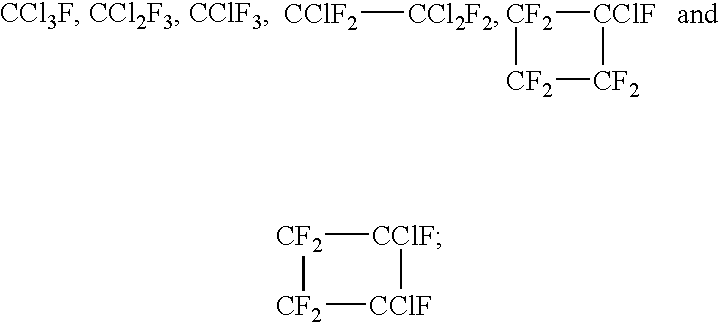Composition comprising low density microspheres
a microsphere and low density technology, applied in the field of composition comprising low density microspheres, can solve the problems of difficult visualization of difficult to visualize the bowel mucosa with either barium or iodine contrast agents, and limitations of contrast agents
- Summary
- Abstract
- Description
- Claims
- Application Information
AI Technical Summary
Problems solved by technology
Method used
Image
Examples
example 1
[0037] A vessel is filled with 50 parts by weight of deionized water and 6 parts by weight of a 25 percent by weight aqueous colloidal silica dispersion. A mixture of 0.3 parts by weight of a 10 weight percent solution of diethylamine-adipic acid copolymer is added to the above. A condensation reaction occurs creating a mixture having a viscosity of about 95 centipoise at a temperature of about 27° C. Potassium dichromate (0.05 parts by weight) is added to the aqueous phase as a water phase polymerization inhibitor. Sodium chloride (1 part by weight) is also present in the water phase; hydrochloric acid is used to adjust the pH of the aqueous phase to 4.0. Styrene (15 parts by weight), acrylonitrile (10 parts by weight), a mixture of diethylbenzene and divinylbenzene (0.21 parts by weight comprising a 55:45 percent mixture of each respectively), 6.25 parts by weight of isobutane and 0.07 parts by weight of secondary butyl peroxydicarbonate. The oil phase is added to the water phase ...
example 2
[0038] The procedures of Example 1 are substantially repeated with the exception that 1 part by weight of methanol is added to the reaction mixture. The dry unexpanded and dry heat expanded microspheres are then studied by Coulter Counter. The dry unexpanded microspheres measure about 8 to 10 microns in size. Essentially all the microspheres exposed to heat expand.
example 3
[0039] The procedures of Example 2 are substantially repeated except that after synthesis of the microspheres, a slurry of the microspheres is added to an aqueous solution containing 35 weight percent hydrogen peroxide. This slurry is heated to a temperature of about 50° .C for about 3.5 hours and subsequently cooled and air-dried. A portion of the microspheres is then added to water and heated to a temperature of about 75° C. with vigorous stirring for about 30 seconds. Study with Coulter Counter shows that pretreatment with hydrogen peroxide enables a lower temperature and briefer period of heating to be used for definitive heating and expansion.
PUM
 Login to view more
Login to view more Abstract
Description
Claims
Application Information
 Login to view more
Login to view more - R&D Engineer
- R&D Manager
- IP Professional
- Industry Leading Data Capabilities
- Powerful AI technology
- Patent DNA Extraction
Browse by: Latest US Patents, China's latest patents, Technical Efficacy Thesaurus, Application Domain, Technology Topic.
© 2024 PatSnap. All rights reserved.Legal|Privacy policy|Modern Slavery Act Transparency Statement|Sitemap

